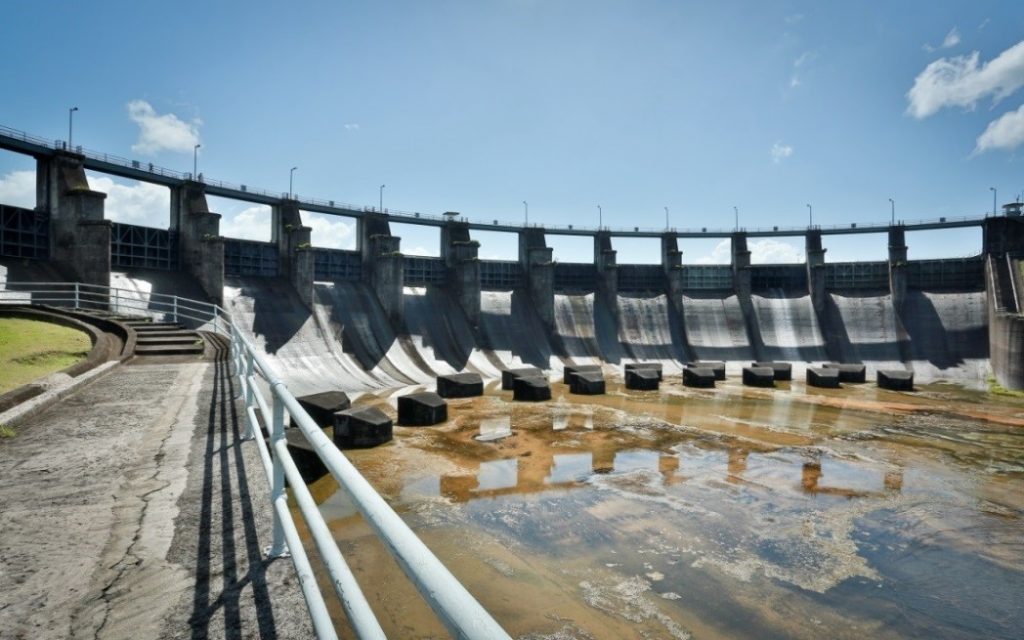Giancarlo Brugiati
The Panama Canal is an interoceanic waterway between the Atlantic Ocean and the Caribbean Sea. It breaks through the narrowest point in Central America: The Isthmus of Panama.
This infrastructure work is fundamental for the economic growth of Panama and also for international commerce. It is considered that 5% of the world goods pass through this interoceanic waterway.
But how does this infrastructure work?
The canal has approximately 77 kilometers in length. It was built on the straitened point of the continent, connecting North America with South America.
The Panama Canal works with a set of locks that allows ships to pass thru the waterway. These locks raise the vessels approximately 27 meters from the sea level to the Gatun’s reservoir level. Hence, facilitating their advance between the mountain range. Finally, through the locks, the vessels can go down to the ocean’s level.
The watershed of the Panama Canal is composed of rivers that fill the reservoirs of Gatun and Alajuela. These rivers are extremely important in the correct functionality of the canal. The vessels use Lake Gatun´s reservoir to navigate between Miraflores and Pedro Miguel locks in the Pacific and Gatun and Agua Clara locks in the Atlantic.
On the other hand, the Alajuela reservoir is considered a secondary lake that fills and regulates Gatun´s waterbody, mainly in drought. During this time, Gatun´s water level tends to go down.
Over the last 40 years, there is a continuous downfall in the reservoirs water levels. This downfall is a consequence of the decrease in precipitation presented by the extreme climatic events, for example, El Niño Oscillation. Hence, this phenomenon tends to extend more during the dry season. Additionally, the increase in water consumption for daily activities affects water levels, directly impacting the draught levels minimum operation.
During the rainy season, which lasts approximately eight months, the watershed receives large amounts of precipitation, leaving the reservoirs up to their maximum operations levels. Although, with the high climate variability, there are months within the rainy season that present low precipitation levels.
The Panama Canal, not only uses water resources from the reservoirs for its functioning during lockage’s but also counts on three water treatment plants: Miraflores, Monte Esperanza, and La Mendoza. These water treatment plants provide thousands of gallons of a vital resource to the areas of Panama, Colon, and Panama West.
According to the Panama Canal Authority records, 2019 was extremely dry. Precipitation downfall was over 31% in comparison with historical records. Nonetheless, 2020 is considered the third year with the lowest precipitation levels during the last seventy years. Although this situation was exhibit during the year, this tendency was evidenced in historical data, analyzed and processed by the Panama Canal Authority.
The cumulative volumes of water that entered the Gatun’s reservoir, during early 2019 were below -59% in comparison with the average level from the period 1934-2018, the level kept low all year, finishing with a deficit of -31%.

Figure 1. Baffle Blocks for energy dissipation at Gatun’s spillway. Source: Wellington Luck.
The Panama Canal Authority hopes to maintain the availability and reliability of the interoceanic route by opening a bidding process that opens the request for proposals for an optimized Water Management system.
The investment of this new project is about 2 thousand million dollars, positioning it as the second-largest project under the management of the Panamanian Government, only after the enlargement of the Panama Canal.
This new optimized water system consists of a group of options to strengthened and modernized the actual system. It looks for water supply preservation. This will allow the ACP to keep using it in the operation of the canal, as well as, for human use during the next 50 years.
On the other hand, during early November 2020, two important metrological events hit Central America, the hurricane Eta, and Iota, both only two weeks apart. Although both hurricanes did not directly hit Panama, unstable meteorological conditions were presented, as a consequence, there were heavy rains and storms along the Caribbean Coast, Gulf of Panama, and Darien. The heavy rains continued until early December 2020. Therefore, the increase in precipitation levels during the latest months of the year. On December 11, 2020, The Panama Canal Authority conveyed that both reservoirs were at their maximum capacity levels of 26.94 m for Gatun and 76.78 m for Alajuela over the capacity curve allowing to generate electric energy through water spills from Madden’s dam in Alajuela’s reservoir.

Figure 2. Opening of the gates at Gatun’s spillway. Source: Giancarlo Brugiati
Although it is necessary to wait for the publication of the hydrological yearbook for the year 2020, by the Panama Canal Authority, to fully understand the behavior of the total contributions to the reservoirs. However, it is observed that the frequency of climate variability is increasing, in shorter periods. In conclusion, climate change is a reality that affects the canal’s water resources and therefore its operation and all the citizens of Panama. Considering that the situation presented directly affects the world economy and the quality of life of Panamanian citizens, it is everyone’s responsibility to take care of and ensure the sustainability of this valuable resource as well as to contribute to reducing climate variability in the world.
Bibliography
Berrocal Menárguez, A.B., (2016). The new Panama Canal. The third set of locks. Sacyr, Madrid, España: Lunwerg.
Giancarlo Brugiati Estudiante del Máster Universitario en Ingeniería de Caminos, Canales y Puertos.
